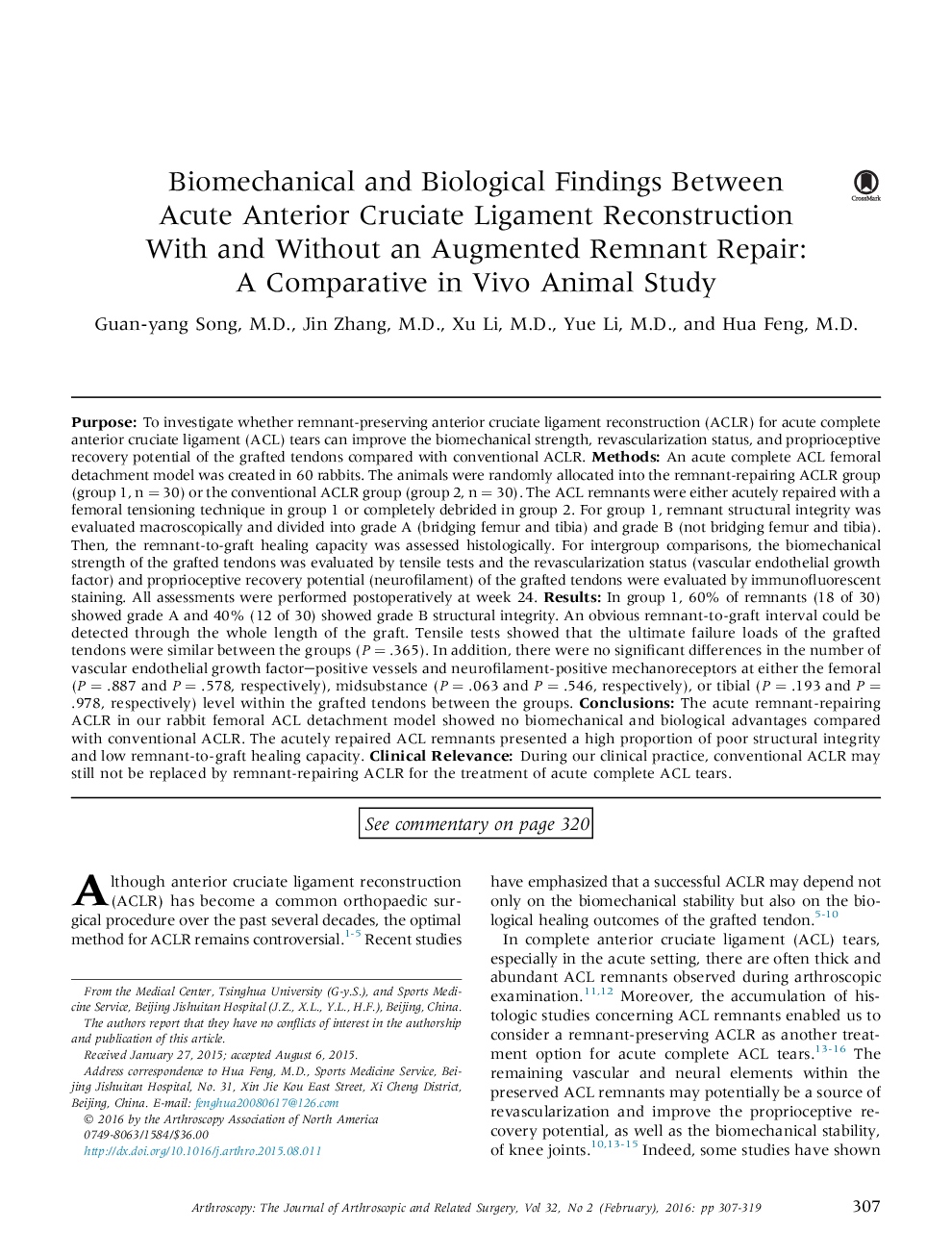| کد مقاله | کد نشریه | سال انتشار | مقاله انگلیسی | نسخه تمام متن |
|---|---|---|---|---|
| 4042313 | 1603474 | 2016 | 13 صفحه PDF | دانلود رایگان |
PurposeTo investigate whether remnant-preserving anterior cruciate ligament reconstruction (ACLR) for acute complete anterior cruciate ligament (ACL) tears can improve the biomechanical strength, revascularization status, and proprioceptive recovery potential of the grafted tendons compared with conventional ACLR.MethodsAn acute complete ACL femoral detachment model was created in 60 rabbits. The animals were randomly allocated into the remnant-repairing ACLR group (group 1, n = 30) or the conventional ACLR group (group 2, n = 30). The ACL remnants were either acutely repaired with a femoral tensioning technique in group 1 or completely debrided in group 2. For group 1, remnant structural integrity was evaluated macroscopically and divided into grade A (bridging femur and tibia) and grade B (not bridging femur and tibia). Then, the remnant-to-graft healing capacity was assessed histologically. For intergroup comparisons, the biomechanical strength of the grafted tendons was evaluated by tensile tests and the revascularization status (vascular endothelial growth factor) and proprioceptive recovery potential (neurofilament) of the grafted tendons were evaluated by immunofluorescent staining. All assessments were performed postoperatively at week 24.ResultsIn group 1, 60% of remnants (18 of 30) showed grade A and 40% (12 of 30) showed grade B structural integrity. An obvious remnant-to-graft interval could be detected through the whole length of the graft. Tensile tests showed that the ultimate failure loads of the grafted tendons were similar between the groups (P = .365). In addition, there were no significant differences in the number of vascular endothelial growth factor–positive vessels and neurofilament-positive mechanoreceptors at either the femoral (P = .887 and P = .578, respectively), midsubstance (P = .063 and P = .546, respectively), or tibial (P = .193 and P = .978, respectively) level within the grafted tendons between the groups.ConclusionsThe acute remnant-repairing ACLR in our rabbit femoral ACL detachment model showed no biomechanical and biological advantages compared with conventional ACLR. The acutely repaired ACL remnants presented a high proportion of poor structural integrity and low remnant-to-graft healing capacity.Clinical RelevanceDuring our clinical practice, conventional ACLR may still not be replaced by remnant-repairing ACLR for the treatment of acute complete ACL tears.
Journal: Arthroscopy: The Journal of Arthroscopic & Related Surgery - Volume 32, Issue 2, February 2016, Pages 307–319
